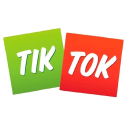We Created A Data-Focused Agency & Grew It To $40K/Month
Hello! Who are you and what business did you start?
Hi, I’m Katie and I’m the CEO of Trust Insights. I co-founded this company in 2017 with my business partner Christopher S. Penn. Trust Insights is a consultancy that focuses on digital marketing, data analysis, and change management. We started the company as a reaction to what we were seeing in the marketing industry. There are a lot of marketers, and other professionals, that state they are “data-driven” but don’t make decisions with data. This is where we come in.

A big issue I saw with the consulting industry as a whole was a lack of transparency. Everyone is so tight-lipped about how things are done, with this fear that we’re going to steal each other’s secrets. I wanted to change that, change that culture and change that for our clients. We use a lot of Artificial Intelligence and Machine Learning to do our analysis and there are very few resources that help non-technical people understand...

Download the report and join our email newsletter packed with business ideas and money-making opportunities, backed by real-life case studies.

Download the report and join our email newsletter packed with business ideas and money-making opportunities, backed by real-life case studies.

Download the report and join our email newsletter packed with business ideas and money-making opportunities, backed by real-life case studies.

Download the report and join our email newsletter packed with business ideas and money-making opportunities, backed by real-life case studies.

Download the report and join our email newsletter packed with business ideas and money-making opportunities, backed by real-life case studies.

Download the report and join our email newsletter packed with business ideas and money-making opportunities, backed by real-life case studies.

Download the report and join our email newsletter packed with business ideas and money-making opportunities, backed by real-life case studies.

Download the report and join our email newsletter packed with business ideas and money-making opportunities, backed by real-life case studies.



































